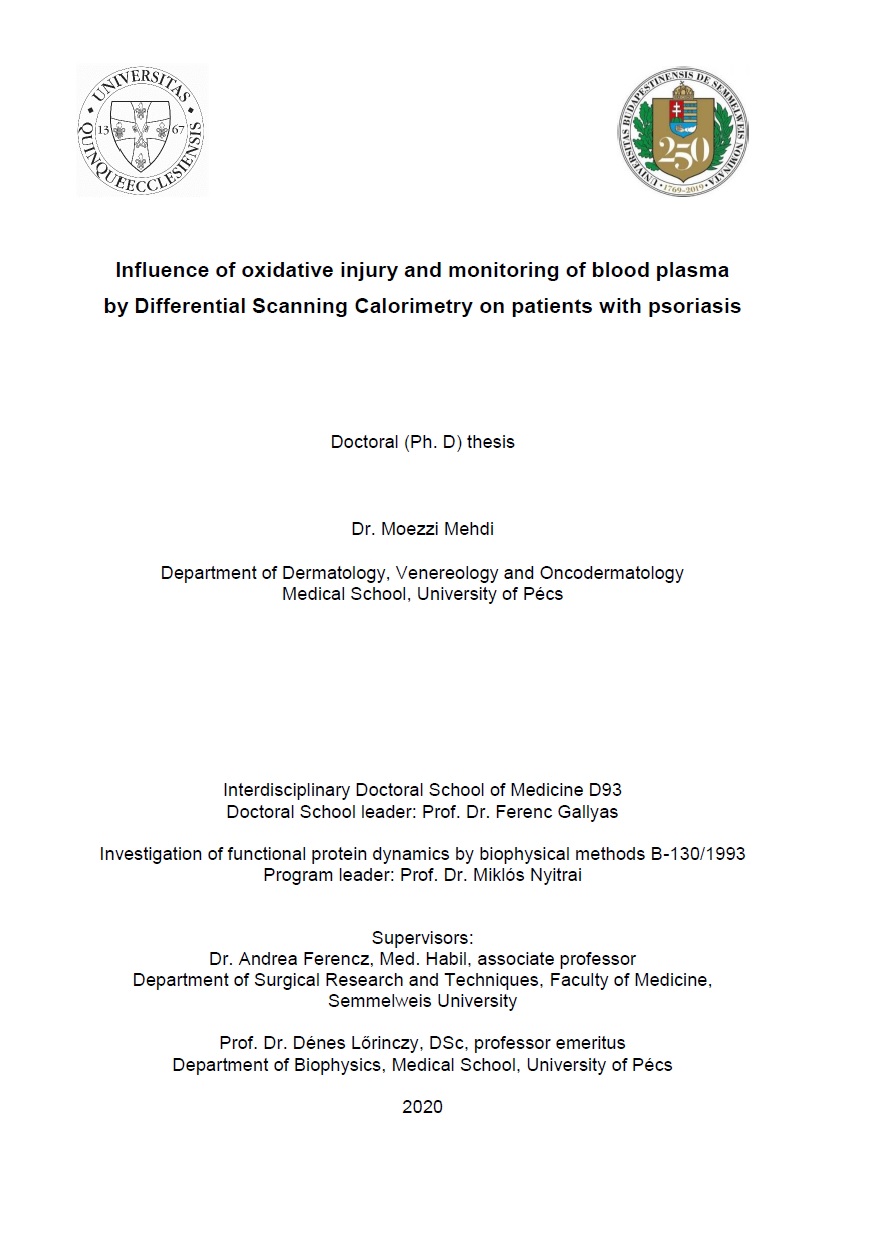Influence of Oxidative Injury and Monitoring of Blood Plasma by Differential Scanning Calorimetry on Patients With Psoriasis
Abstract
Psoriasis is a long-lasting skin disorder, which is appearing in different severity form. It has a
predilection for presenting on the scalp, extensor surfaces of the limbs, hands and feet, sacral and
genital regions, and sometimes accompanied with nail changes, but the total body surface area
affected can vary. According to dermal symptoms there are five types of psoriasis: plaque, guttate,
inverse, pustular, and erythrodermic. The lesions characterized mainly by red, scaly, and raised
plaques. In about 80% of cases, plaque psoriasis presents as symmetrical, sharply demarcated,
erythematous, dry, scaling, pruritic plaques affecting the top first layer of the epidermis. Psoriasis
should be a systemic disorder; in 10-30% of the cases can also cause inflammation of the joints
(psoriatic arthritis, PsA) and often involves extra-articular sites, such as the gastrointestinal tract and
the eye. Recently, mounting evidence for an association between severe psoriasis and systemic
metabolic disorders, such as obesity, insulin resistance, hypertension, dyslipidaemia, cardiovascular
disease, periodontitis, and depression were found. Along with local (skin look, itching, pain) and
general physical symptoms patients have negative body image due to social stigmatization and
decreased quality of life, which explains that psoriasis recently has been in the focus of experimental
and clinical research.

